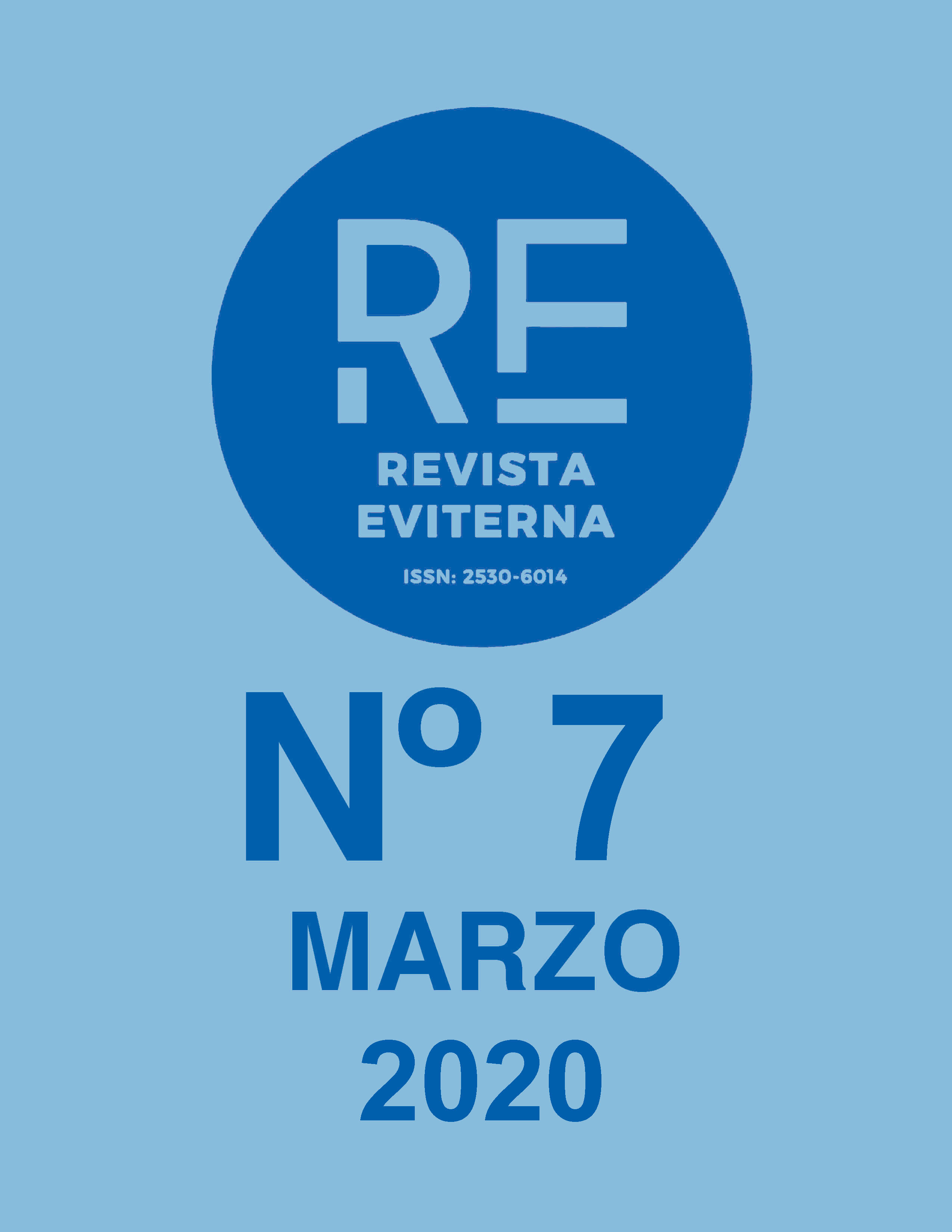Architecture and liturgical elements in some protestant churches of historic tradition
DOI:
https://doi.org/10.24310/Eviternare.v0i7.8385Keywords:
Reform; protestant architecture; mainline; compared liturgic; architectures modelAbstract
Traditionally, Protestant churches in Spain have little presence in the scope of artistic research because the low numerical and stylistic relevance of those buildings if they are compared to their Catholic counterparts. This paper is aimed to try to make a comparative study of architectural spaces and cultic elements between three protestant churches of historical tradition, and one catholic temple, the last one used as an architectural paradigm. To carry it out, two of Protestant temples in the city of Malaga and one from Madrid have been selected. The catholic model is the Holy Martyrs church, from Málaga too.
From an artistic perspective based on the formal analysis of these temples and the study of the social, political, and religious context of the Reformation movement, an attempt is made to seek a historical, theological, and doctrinal explanation of the possible differences or similarities of the architectural solutions used by the selected denominations. Is precisely for this reason the comparison of the liturgical guidelines is a meaningful key to determine presences, coincidences or absences related to the different rites we can found in the constructive space.
Likewise, collected data, according to preset parameters, are shown ordered in a comparative table, following an evaluation system based on total, partial or null compliance of the conditions defining liturgical elements and architectural spaces. In addition, they are translated into analytical charts in order to make easy the understanding of the information.
Downloads
Metrics
References
ABC. (2015). << Friendenskicher>>, La desconocida iglesia que sobrevivió a la Guerra Civil, el franquismo y el nazismo. Recuperado de: https://www.abc.es/madrid/20150207/abci-curiosidad-madrid-friedenskirche-iglesia-201502051950.html
De Mateo Avilés, Elías (2001), Entre la represión y la tolerancia. El protestantismo y las sectas en Málaga durante la época de Franco (1937-1967). En Anuales de Historia Contemporánea, nº 17, pp. 332-336.
Egido López, Teófanes (1992). Las Reformas Protestantes. Edit. Síntesis: Madrid.
Iglesia Parroquial de los santos mártires Ciriaco y Paula. (s.f.). Recuperado de: http://www.santosmartires.es/visita/visitaturistica.
Kasper Walter et al. (2005). Diccionario enciclopédico de la época de la Reforma. Barcelona: Herder editorial.
Somavilla, Enrique (2018). Protocolo, historia y desarrollo de las Iglesias Protestantes, Estudios Institucionales, vol. Vnº8, pp. 95-149.
Ramos, Marco Antonio (2001), El Protestantismo. Recuperado de: https://ebookcentral.proquest.com
Rodríguez Marín, Francisco José (2005). Patrimonio y ciudad. Valores artísticos y culturales en el cementerio inglés de Málaga: entre la magnificencia y el deterioro. En Isla de Arriarán: revista cultural y científica nº2, pp. 23-60. Recuperado dehttps://dialnet.unirioja.es/servlet/articulo?codigo=2042628
Van Der Gripj, Klaus (2001). Investigando la historia del protestantismo ibérico. Anuales de Historia contemporáneanº17, pp. 39-40.
Vidal Rojas, Rodrigo (2016). La Arquitectura Protestante ante lo Sagrado. En Academia XXII: revista semestral de investigación, vol. VII, Nº. 14, págs. 83-97.
Vilar, Juan Bautista (2001). Los protestantes españoles: la doble lucha por la libertad durante el primer franquismo (1939-1953). EnAnuales de Historia contemporáneanº17, pp. 253-259.
Von Allmen, Jean Jacques (1968). El culto cristiano: su esencia y celebración. Ediciones Sígueme: Salamanca.
Downloads
Published
How to Cite
Issue
Section
License
All the contents published in Revista Eviterna are subject to the Creative Commons Reconocimento-NoComercia-Compartirigual 4.0 license, the full text of which can be found at <http://creativecommons.org/licenses/by-nc-sa/4.0>
They may be copied, used, disseminated, transmitted and publicly exposed, provided that:
The authorship and original source of your publication (Journal, editorial and URL of the work) are cited.
They are not used for commercial purposes.
The existence and specifications of this use license are mentioned.

Copyright is of two kinds: moral rights and patrimonial rights. Moral rights are perpetual, inalienable, inalienable, inalienable, inalienable and imprescriptible prerogatives.
In accordance with copyright legislation, Revista Eviterna recognizes and respects the moral rights of the authors, as well as the ownership of the economic right, which will be transferred to the University of Malaga for dissemination in open access.
The economic rights refer to the benefits obtained by the use or disclosure of the works. Revista Eviterna is published in open access and is exclusively authorized to carry out or authorize by any means the use, distribution, disclosure, reproduction, adaptation, translation or transformation of the work.
It is the responsibility of the authors to obtain the necessary permissions of the images that are subject to copyright.






12.png)
